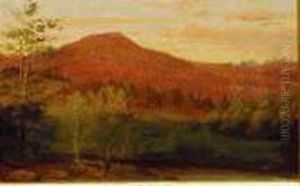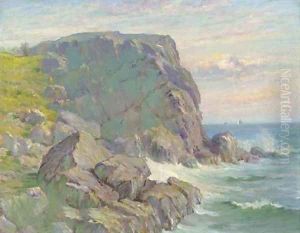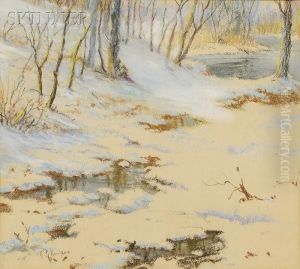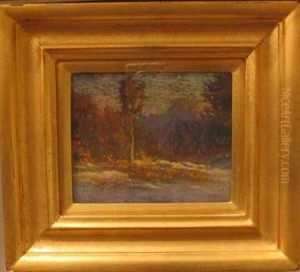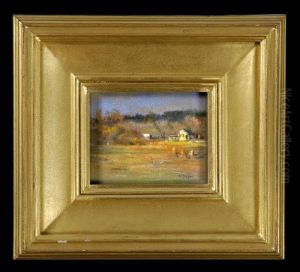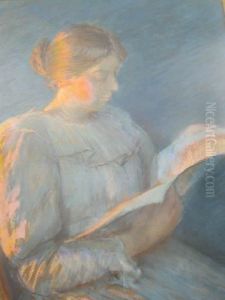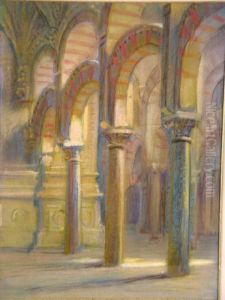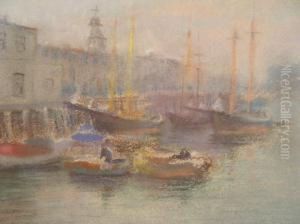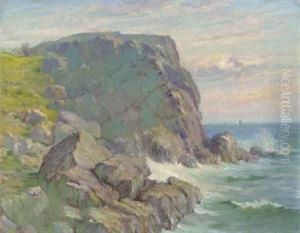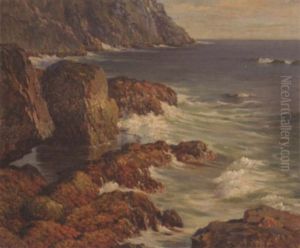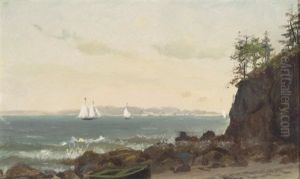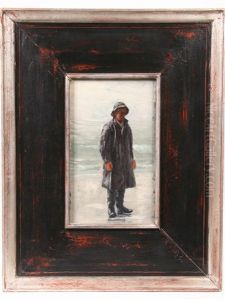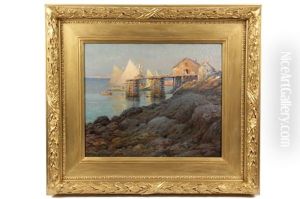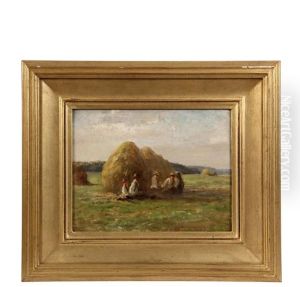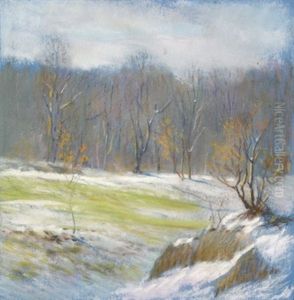William Partridge Burpee Paintings
William Partridge Burpee was an American painter, best known for his marine and coastal scenes, as well as his landscape paintings. He was born in Rockland, Maine, in 1846, a location that profoundly influenced his artistic direction. Burpee developed a deep connection with the Atlantic coast, which became a recurring theme in his work. Throughout his career, Burpee's style evolved, reflecting the influence of the American Tonalism movement, characterized by soft, muted colors and an emphasis on mood and atmosphere.
Burpee received his formal art education at the Lowell Institute in Boston, and he furthered his studies under the guidance of notable artists such as George Inness and possibly Winslow Homer, who were significant figures in American art during that time. Their influence is evident in Burpee's approach to landscape painting, where he often focused on capturing the ephemeral qualities of light and atmosphere.
In the late 19th and early 20th centuries, Burpee traveled extensively throughout Europe, further expanding his artistic horizons. Despite the influence of European art, his subject matter remained deeply rooted in the American landscape, particularly the rugged coastlines of New England. He was a member of several art associations, including the Boston Art Club and the Salmagundi Club in New York, which helped to establish his reputation as a prominent American artist.
Burpee's work was widely exhibited during his lifetime, including shows at prestigious institutions such as the Pennsylvania Academy of the Fine Arts and the Boston Art Club. Today, his paintings are part of collections in museums and private collections across the United States, appreciated for their contribution to the American Tonalism movement and their serene depiction of the American landscape.
Despite his success, William Partridge Burpee is not as well-known today as some of his contemporaries. However, his work continues to be studied and admired by art historians and collectors for its beauty and its unique place in the development of American landscape painting. Burpee passed away in 1940, leaving behind a legacy of work that continues to inspire and captivate those who appreciate the subtleties of American Tonalist art.
